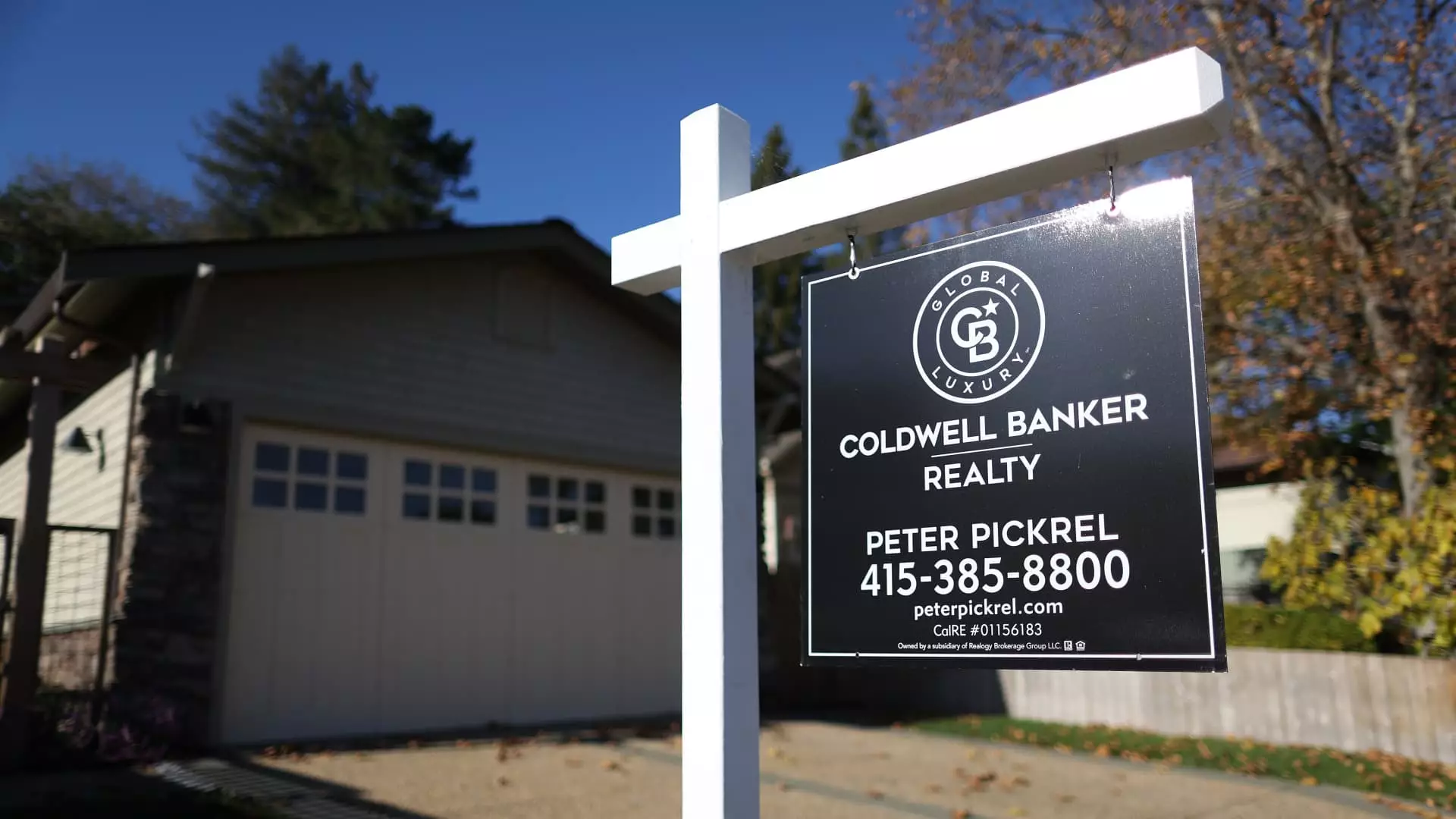In recent weeks, mortgage rates have witnessed a notable decline, prompting discussions within the real estate and financial sectors. The ongoing decrease, marking its sixth consecutive week, appears to be promising, but the heated pursuit of homeownership and refinancing remains tepid. Recent data indicate that while mortgage rates have hit their lowest points since February 2023, the demand for mortgages has not paralleled these encouraging trends. Instead, it seems as though buyers and homeowners are caught in a limbo, waiting for clearer economic indicators before making decisive moves.
As reported by the Mortgage Bankers Association (MBA), the average interest rate for 30-year fixed-rate mortgages, particularly those adhering to conforming loan balances, has dropped from 6.43% to 6.29%. Alongside the decreasing points—now at 0.55 compared to 0.56—the value proposition for borrowers has improved. This represents a striking contrast compared to the previous year, with rates nearly a full percentage point lower, which ideally should stimulate demand.
However, Joel Kan, the MBA’s vice president and deputy chief economist, points out that low mortgage rates have not yet sparked the anticipated mortgage demand. Recent statistics show only a marginal increase of 1.4% in total mortgage applications. This phenomenon raises concerns about the underlying factors influencing potential homebuyers and reflects a complex market landscape that may be hesitant amidst wider economic uncertainties.
The refinancing segment showcases an intriguing paradox. Although applications for refinancing observed a week-over-week uptick of 1%, they have dramatically surged by 106% compared to the same week last year. This doubling may appear impressive at first glance, but a deeper analysis reveals a more subdued reality. The context is crucial; last year’s refinancing activity was significantly low, suggesting that even substantial percentage gains are not indicative of buoyancy in the market.
Many homeowners, particularly those who purchased properties in the last two years when rates spiked, are in a position to capitalize on the current lower rates. Yet, Kan asserts that a considerable number still hold onto their mortgages with sub-5% interest rates, curbing the potential for further refinancing moves. The implication is clear: while there are opportunities for some, a significant portion of the market remains passive, reflecting the challenges posed by previous rate hikes.
The scenario for potential home purchasers is equally complex. The most recent data suggests a 2% rise in mortgage applications for home purchases; however, this figure lags 3% behind where it was the same week a year ago. Clearly, the combination of reduced rates and the allure of affordability is not strong enough to compensate for persistent obstacles. Chief among these challenges are affordability issues and limited housing inventory, which serve as significant impediments to prospective buyers.
Kan further elaborates that even though lower rates may render some homes more affordable, myriad factors, including market dynamics and personal financial stability, deter individuals from making significant financial commitments.
As mortgage rates continue to slide, industry observers are closely monitoring the economic landscape to gauge the future direction of these trends. With the upcoming release of the Consumer Price Index (CPI), which indicates inflation levels, anticipation builds regarding its potential to shift the dynamics of mortgage rates. The timing of this report is critical, as it falls within the blackout period leading up to a potential Federal Reserve rate cut, making its implications all the more significant.
Matthew Graham from Mortgage News Daily emphasizes the volatile nature of the response expected from market players regarding CPI data. He suggests that the unpredictability surrounding the Federal Reserve’s decisions could lead to swings in market sentiment following the report’s release.
The mortgage market paints a picture of cautious optimism clouded by economic uncertainty. While the decreasing mortgage rates signify a pivotal moment for potential homeowners and refinancers, the actual demand remains subdued. The interplay of affordability, inventory, and macroeconomic factors will continue to shape the landscape, compelling both industry professionals and consumers to approach the market with careful consideration. Only time will reveal whether the current trajectory of rates can catalyze a decisive shift towards increased mortgage activity.

